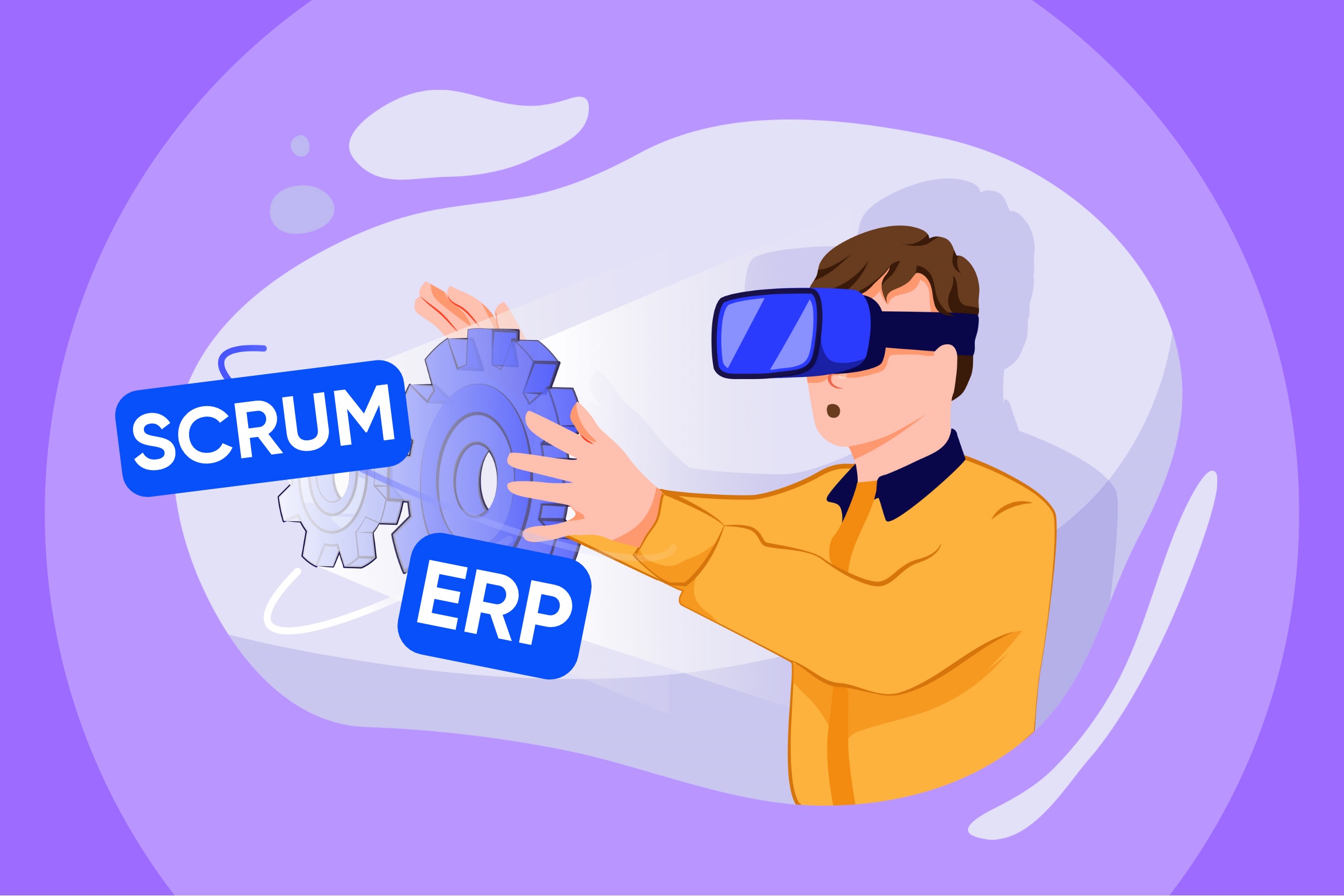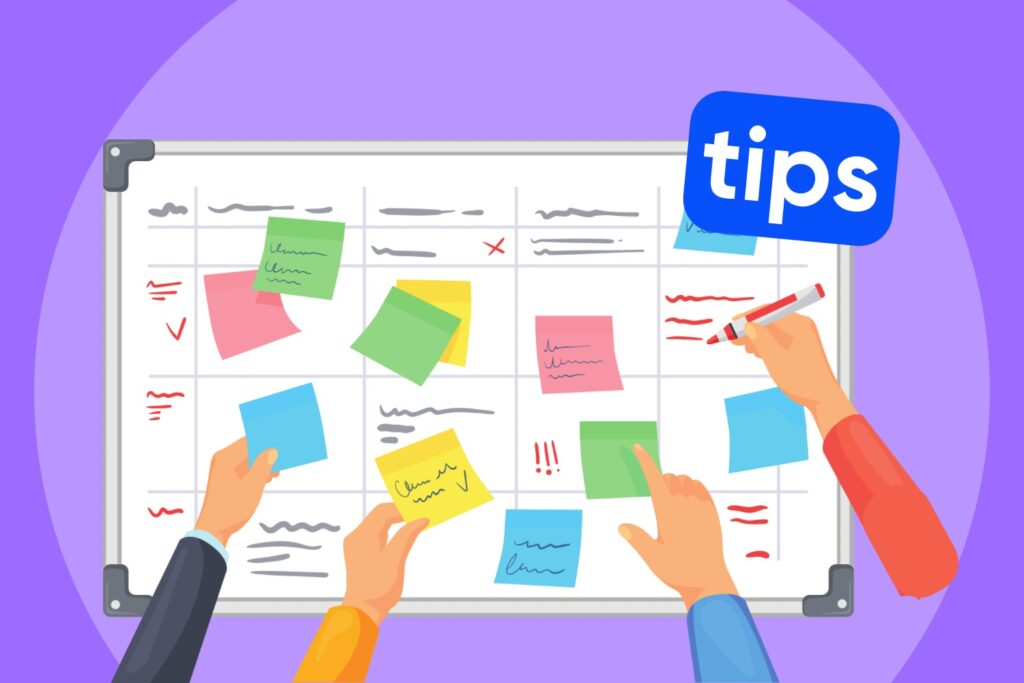
Introduction
As the world of information technology practices continues to evolve fast, with no businesses sparing no effort to make the best use of available resources in efforts to quicken the pace of their operations, two prominent methodologies are Scrum and ERP systems. While Scrum stands for agility, adaptability, and incremental development, ERP stands for Enterprise Resource Planning, emphasizing a systematic means of operation management.
At first glance, Scrum and ERP may seem like contrasting approaches—Scrum thrives on adaptability and rapid change, while ERP emphasizes stability and structured processes. However, when integrated thoughtfully, they can create a powerful synergy that enhances productivity and business efficiency. The real challenge lies in how organizations can effectively blend Scrum’s flexibility with the structured approach of an ERP system for IT business. Let’s explore the key benefits, challenges, and best strategies for merging these two methodologies.
Scrum is a much-established framework in most of the IT organization which assists in managing the project work by breaking it into short cycles known as sprints. It thereby ensures rapid development with feedback and enhancement. At this point, it allows companies to quickly adjust to new challenges without long, inflexible planning phases.
On the contrary, ERP concentrates all the business functions from finance to a human resource in an IT firm. These help automate operations and make better decisions while ensuring data accuracy in all departments. ERP builds a structured workflow where every other process conforms to the organization’s goals. Many companies face implementation challenges of standard ERP solutions because of their structure. These require long periods of deployment and much planning which can be difficult to fit into a dynamic business environment. Through the application of Scrum principles, organizations that use ERP solutions for IT business management can now implement ERP modules incrementally and flexibly. Organizations need not hold back until all the modules are fully deployed but may release working ERP modules in shorter iterations and hence assure continuous feedback and improvement.
Advantages of the Integration of Scrum and ERP
- Quicker Implementation
Traditional ERP implementations can take years to complete. By incorporating Scrum, businesses can implement ERP solutions for IT business management incrementally, reducing deployment time and ensuring faster delivery of results. - Improved Collaboration
It fosters teamwork and regular communication. Applying Scrum to ERP processes within an IT company enhances coordination between developers, management, and end-users. - More Flexibility
Businesses need not follow fixed schedules as with a standard ERP implementation. With Scrum, they can prioritize the most important features and adjust the workflow as needed, with upgraded versions. - Risk Reducer
Breaking down the ERP system into smaller parts will help the organization to detect problems much earlier than can be done in a big bang, hence reducing the risks of the whole project. - Continuous Improvement
Scrum encourages ongoing enhancements. When applied to ERP for the HR department, it ensures HR systems remain adaptive and aligned with the company’s changing workforce needs.
Challenges of Integrating Scrum with ERP
This is not easy, however. Scrum has its own set of challenges when fitted into an ERP. Scrum allows for flexibility and the provision of a rigidly structured ERP system conflicts with the very core of Scrum which is frequent changes. This compatibility conflict invariably results in issues such as: Resistance from teams that have traditionally worked in a structured manner with conventional ERPs. Challenges of applying agile development methodologies to the complex functions of ERP. High frequency of testing that needs to be done to maintain system stability and data accuracy. In order to address these challenges, organizations need to strike a balance between structured ERP processes and the flexibility that agile methodologies bring.
Best Practices for a Successful Integration
- Start Small – Apply it to a pilot like using Scrum to an ERP function such as personnel management, before scaling up.
- Set Clear Goals – Ensure that the team knows the ERP objectives so that sprints can be aligned with the business.
- Encourage Cross-Team Collaboration – Create the channel of IT team, ERP consultants, and business department communication to streamline the work process.
- Implement Continuous Testing – The frequency of testing will keep the system stable, and at the same time, adopt agile adjustments.
- Offer Training – Provide employees with knowledge in Scrum and ERP techniques to facilitate a successful adoption.
Summary
At first sight, Scrum and ERP might appear as though they would clash, but merging these two approaches can be very valuable for contemporary organizations. In other words, by fusing the agility brought by Scrum with the discipline of management that ERP offers, firms can better ensure successful project outcomes, foster collaboration, and usher in continuous improvements.
For IT organizations, executing their ERP opt Scrum makes it faster for them to deploy the system and make it more adaptable with sustained achievement in their business. By treading this fine line between ensuring accuracy and providing an understanding, the firms can minimize their cost overruns, reduce the risks, and stimulate the innovation in ERP system operations.
you achieve your goals!




